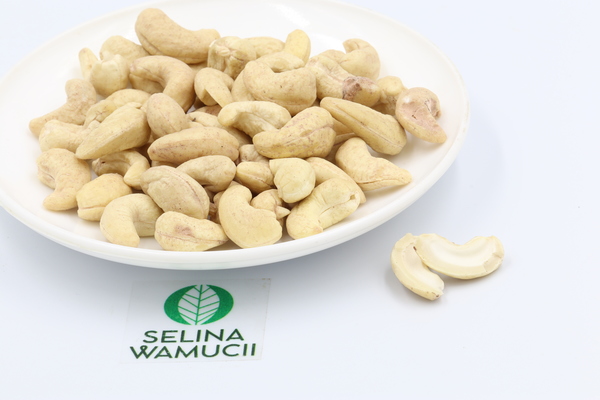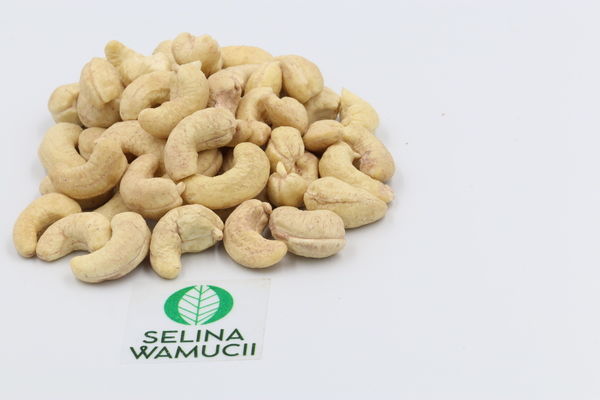Buy Guinea Cashew Nuts Directly From Exporters & Suppliers - Best of 2024 Market Prices
| Summary | |
|---|---|
| Varieties | W – 180, W – 210, W – 240, W – 320, W – 450 |
| Size | 10mm-20mm |
| Season | February to May Early in the calendar year to mid-year |
| Packing Specification | Vacuum packed.Tins, containers, poly sacks |
| Storage | Stored in cool, dry conditions, room temperature 14-21 degrees celcius |
| Transport Conditions | 5-25 degrees Celsius, clean, dry, well-ventilated containers, controlled humidity |
The Guinea cashew nuts tree, like the rest, is evergreen and is found in the tropics. Cashew nuts are a rich source of vitamins A, D, and E, fats as well as proteins. The nuts can be processed into a drink or distilled to process liquor. They are also eaten on their own, processed into cheese or butter, and used in recipes.
The cashew nut species originated in Latin America and northeast brazil. Its exportation began in the early 1550s by the Portuguese and saw its spread to India by the 1560s. From India, it spread all over Southeast Asia and eventually Africa.
The traditional tree can grow up to 14 meters, whereas the dwarf trees are up to 6 meters. Between the two, the dwarf has higher yields and is thus more profitable. It is an evergreen tree with an irregularly shaped trunk. The leaves on the plant are leather in texture and spirally arranged, have smooth margins, and are broad. The cashew tree bears what is called an accessory fruit, also a false fruit. The oval structure that develops from the pedicel and the receptacle of the flower is what is seen as a fruit- the cashew apple. The cashew apple is yellow or red when ripe and is edible. The actual cashew fruit is a kidney-shaped drupe that has a single seed, which is considered a nut.
Guinea grows approximately 5,000 tons of raw cashew nuts each year under an approximated 30,000ha of land. The country is rehabilitating 1600 ha of old and preparing 12,000ha of new cashew plantation all in a bid to improve cashew nut production and, consequently, the income. The production is focused in two regions; around Kankan and Mandiana in the Eastern highlands and around Boke in the northwest. There are other cashew growing areas, but their output is not as substantial as the two regions.
The varieties found in Guinea produce more kernels per unit weight in yield and thus are more valuable. There is the red caju-di-terra, which has small nuts and is 3-4g and the yellow caju-di-Mocambique that has a more massive apple and is 6-8 grams.
The plant thrives and produces high yields during the dry season in the lowland areas — a well-defined four-month dry season. The plant is capable of adapting to varying soil conditions given its extensive root system but for best production, deep well-drained sandy loam without a hardpan. An 8.0 or more PH is also unsuitable. Guinea cashew nuts ideal climate would be temperatures between 20°c to 30°c and 1000-2000 mm annual rain.
The tree takes three years since planting to begin producing, and an additional five years before harvesting can begin. Harvesting is done by picking up fallen nuts and easing off the succulent apple from the hard cashew nuts.
After harvesting, the Guinea cashew nuts are taken through thorough cleaning, which is accomplished by manual picking or sieving. Roasting then happens in an open pan or rotary cylinder, and afterward, shelling and separation where the shells get removed and the nuts extracted manually or mechanically. The final stage of drying of the kernels in hot chambers causes the peeling of the outer coat. The kernels are brittle at this stage and should get handled with care.
Export purposes dictate that grading be done based on the number of kernels per pound. The Guinea cashew nuts are classified based on being whole or split and further classified into white, scorched, or dessert pieces. After this, the packaging gets done in several grades, and it is accomplished in tins that are pumped with carbon dioxide and sealed. Cashew nuts are also often packed in poly sacks. A temperature range of 5°c to 25°c is favorable for exportation. Guinea primarily exports raw cashew nuts rather than processed or roasted nuts ready for consumption.
Sign up to the Selina Wamucii platform today to get connected to buyers and sellers of Guinea cashew nuts
Get Instant Quote
Are you a producer of Guinea Cashew Nuts or other products?
Sign up today for FREE to buy or sell Guinea Cashew Nuts.





